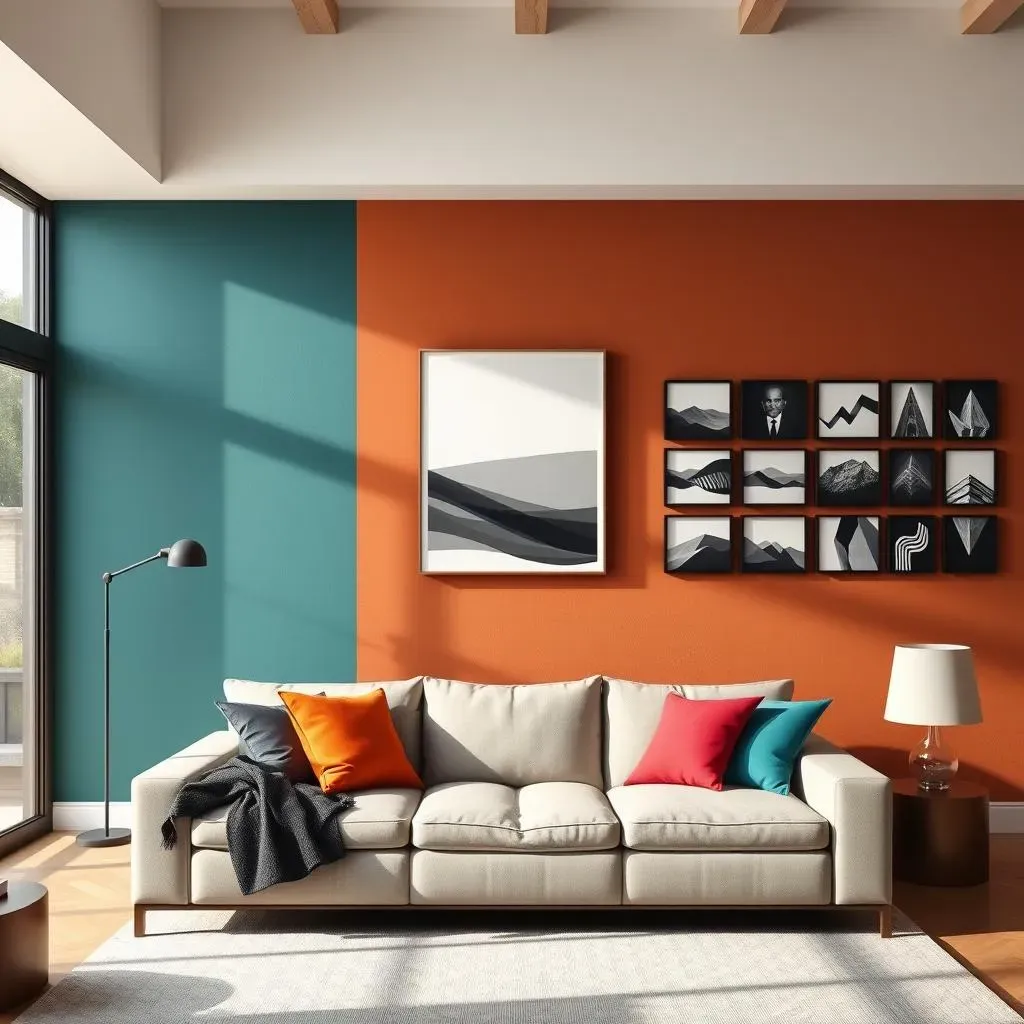Table of Contents
Thinking about spicing up your space with a splash of color? You're not alone! Accent walls are a fantastic way to add personality and visual interest to any room. But what if one accent wall just isn't enough? The question then becomes: Can you paint 2 accent walls and still achieve a balanced, stylish look? It's a design query that pops up more often than you might think.
The Accent Wall Dilemma: Can You Paint 2 Accent Walls?
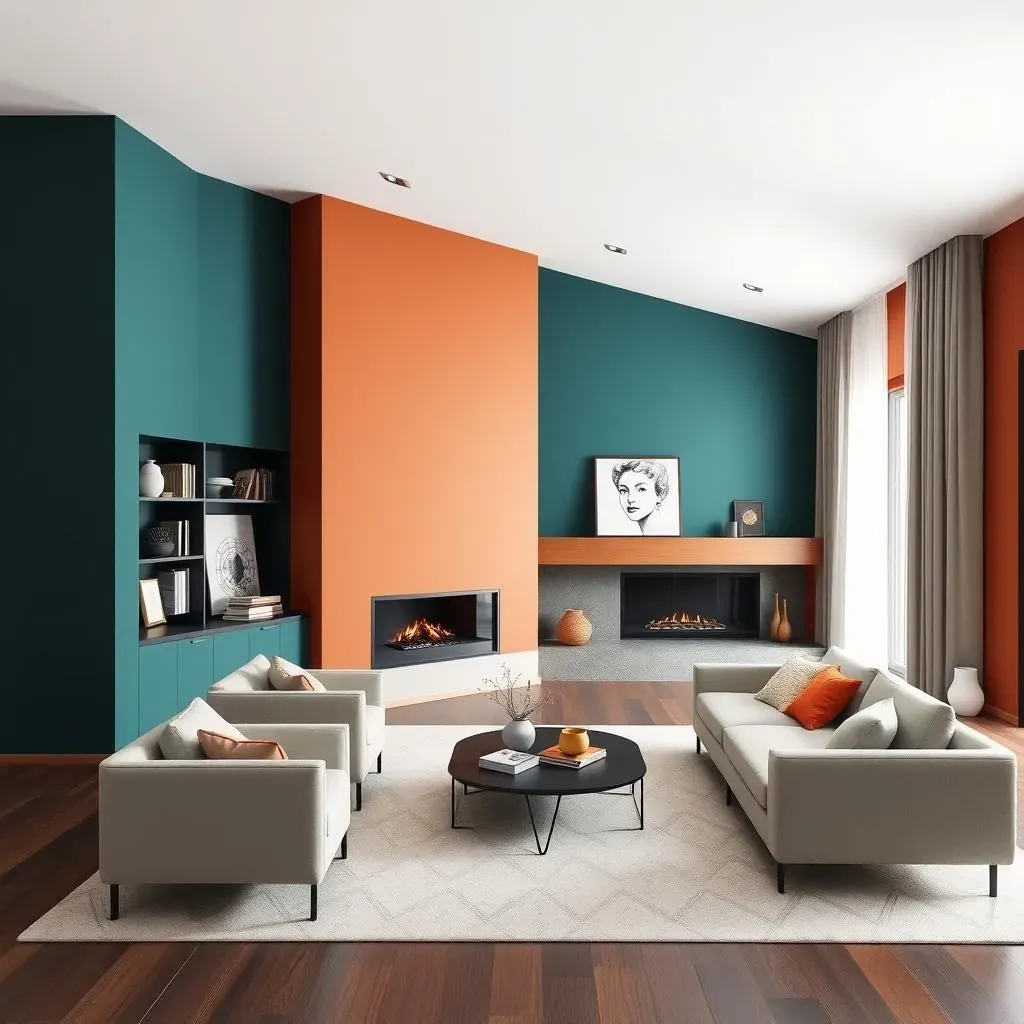
The Accent Wall Dilemma: Can You Paint 2 Accent Walls?
The Allure of the Accent Wall
Let's face it, accent walls are popular for a reason. They're like that one bold accessory that pulls an entire outfit together. A single, well-placed accent wall can transform a bland room into a stylish haven, drawing the eye and adding depth. They're a relatively low-commitment way to experiment with color, texture, or even wallpaper without overwhelming the entire space. But, like any design element, there's a point where more isn't necessarily better. That's where the dilemma begins: Can you paint 2 accent walls without creating a chaotic, disjointed look?
The appeal of accent walls lies in their ability to highlight a specific feature, create a focal point, or define a zone within a larger room. Think of it as a way to showcase architectural details, emphasize a stunning piece of furniture, or simply inject a dose of personality. They're a designer's secret weapon for adding visual interest and creating a sense of drama. However, the key is balance. Too many focal points can lead to a sense of unease, making the room feel cluttered and visually confusing.
The Double Accent Wall Debate
So, you're tempted to double the impact with two accent walls? Hold up! It's not as simple as slapping paint on two different surfaces and hoping for the best. The success of two accent walls hinges on careful planning and a keen understanding of color theory, spatial dynamics, and the overall aesthetic you're trying to achieve. It's about creating harmony, not discord. The question isn't just "can you paint 2 accent walls?", but "should you?" and, more importantly, "how can you pull it off?"
Consider the room's layout. Are the walls opposite each other? Adjacent? Do they have similar architectural features, or are they vastly different in size and shape? These factors will significantly influence how the two accent walls interact and whether they complement each other or compete for attention. Remember, the goal is to enhance the space, not overwhelm it.
Setting the Stage for Success: Key Considerations
Before you even pick up a paintbrush, take a step back and analyze the room. What are its strengths and weaknesses? What feeling do you want to evoke? Is it a cozy, intimate space, or a bright, airy one? The answers to these questions will guide your color choices and help you determine whether two accent walls are truly the right solution.
- Room Size: Larger rooms can generally handle two accent walls more easily than smaller ones.
- Natural Light: Consider how natural light affects the colors you choose.
- Furniture Placement: How will your furniture interact with the accent walls?
- Architectural Features: Do the walls have any unique features that you want to highlight?
Careful planning is paramount. Think about the color palette, the placement of furniture, and the overall flow of the room. A well-executed double accent wall design can be stunning, but a poorly planned one can leave your space feeling unbalanced and visually jarring. It's a risk, but with the right approach, it's a risk worth taking.
When Two Accent Walls Work: Design Principles and Room Considerations
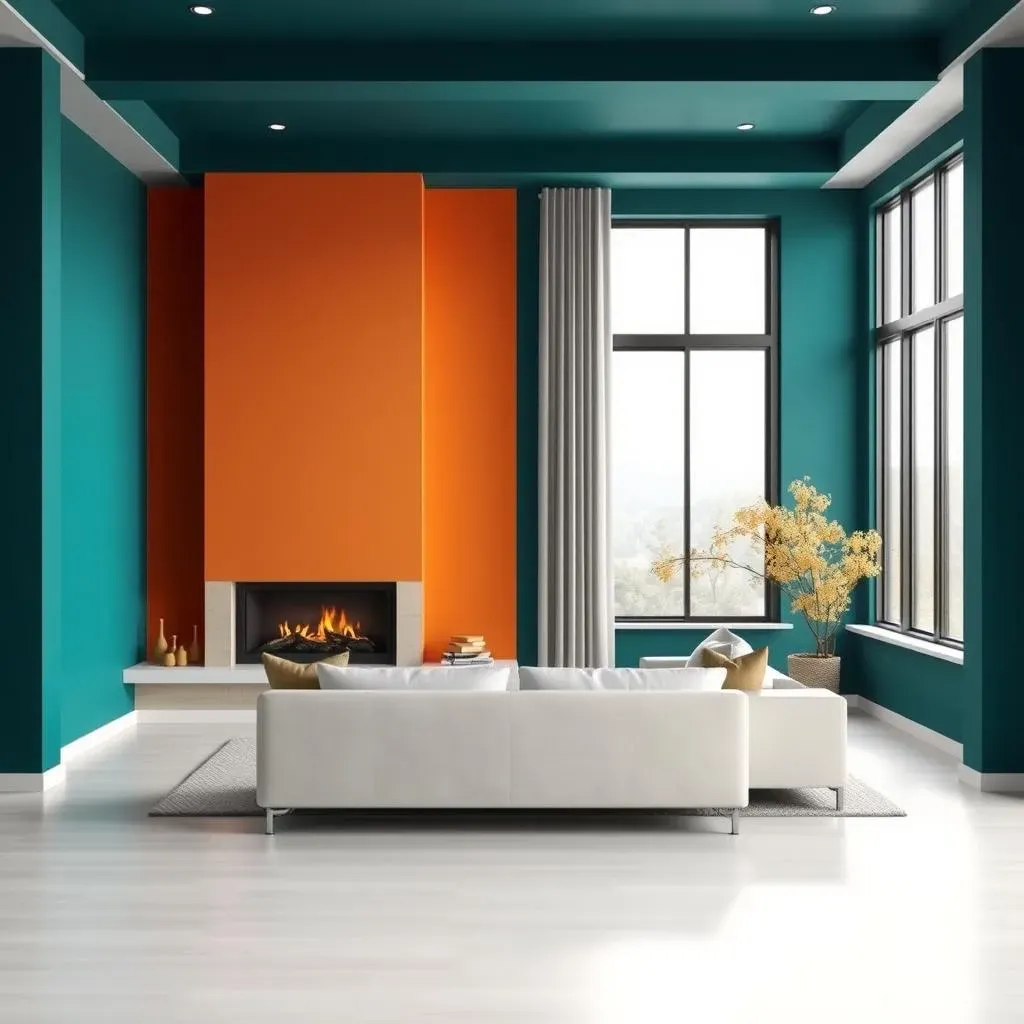
When Two Accent Walls Work: Design Principles and Room Considerations
The Power of Symmetry and Balance
Believe it or not, when two accent walls work, it's often about creating a sense of symmetry and balance. Think of a long, rectangular room. Painting the two shorter end walls in a bold color can visually shorten the space, making it feel more proportional and inviting. It's like giving the room a visual hug! But it's not just about symmetry in shape. Consider balancing the visual weight of the colors themselves. If one accent wall is a deep, saturated hue, the other should be a similar intensity to avoid one wall overpowering the other. It's a delicate dance, but when done right, it can transform a space.
Imagine a living room with a fireplace on one end and a large window on the other. Painting both the fireplace wall and the window wall in a complementary color can draw the eye to these key features, creating a cohesive and balanced look. The key is to choose colors that work well together and enhance the room's natural focal points. It's about creating a harmonious flow, where the two accent walls work together to create a sense of visual unity.
Room Layout and Architectural Harmony
The layout of your room plays a crucial role in determining whether when two accent walls work. Open-concept spaces, for example, can benefit from two accent walls that define different zones within the larger area. Think of a living room that flows into a dining area. Using different accent colors on the walls of each zone can visually separate the spaces, creating a sense of definition and purpose. It's like giving each area its own personality while still maintaining a cohesive overall look.
But it's not just about open-concept spaces. Even in smaller rooms, two accent walls can work if they complement the architectural features. Consider a bedroom with two alcoves or recessed areas. Painting these areas in a contrasting color can highlight these unique details, adding depth and visual interest to the room. The key is to work with the existing architecture, not against it. It's about enhancing the room's natural charm and creating a space that feels both stylish and inviting.
Room Type | Suitable Accent Wall Placement | Color Considerations |
|---|---|---|
Long, Rectangular Room | Shorter End Walls | Similar Intensity Colors |
Open-Concept Space | Walls Defining Different Zones | Complementary Colors |
Room with Alcoves | Inside Alcoves | Contrasting Colors |
Color Theory and Complementary Palettes
Understanding color theory is essential when two accent walls work. Choosing complementary colors, such as blue and orange, or analogous colors, such as blue and green, can create a harmonious and visually appealing look. But it's not just about picking pretty colors. Consider the undertones of the colors you choose. Warm colors, like reds and yellows, tend to advance, making a room feel cozier, while cool colors, like blues and greens, tend to recede, making a room feel more spacious. It's about understanding how colors interact and how they affect the overall mood of the space.
Think of a bedroom with north-facing windows that receives little natural light. Using warm accent colors on two walls can brighten up the space and make it feel more inviting. Conversely, in a room with lots of natural light, cool accent colors can create a sense of calm and serenity. The key is to consider the room's lighting conditions and choose colors that enhance the overall atmosphere. It's about creating a space that feels both beautiful and functional, a place where you can truly relax and unwind.
Potential Pitfalls of Multiple Accent Walls: Avoiding Color Clashes and Visual Overload
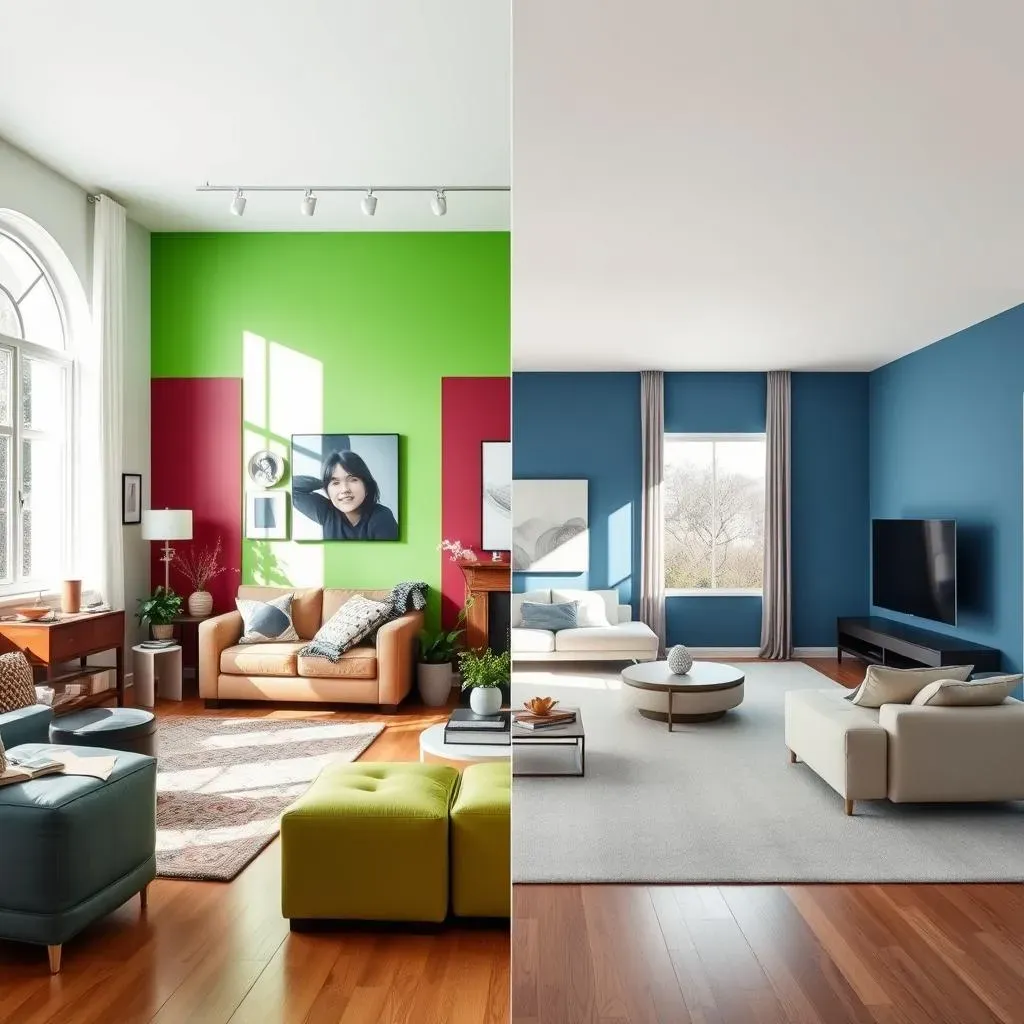
Potential Pitfalls of Multiple Accent Walls: Avoiding Color Clashes and Visual Overload
The Danger of Color Clashes
let's be real. The biggest risk when considering multiple accent walls is a full-blown color catastrophe. It's like wearing clashing prints – you *think* you're making a statement, but everyone else just sees a mess. This is especially true if you're not well-versed in color theory. Throwing together random shades you like without considering their relationship can lead to visual discord and a room that feels unsettling. The goal is harmony, not a chaotic explosion of color.
Imagine pairing a vibrant, almost neon green with a deep, moody burgundy. Individually, they might be interesting, but together? It's a recipe for a headache. The key is to understand the color wheel and how different hues interact. Are they complementary? Analogous? Or are they just fighting for attention, creating a sense of visual tension? Knowing the answers to these questions is crucial to avoiding a color clash that ruins the entire room.
Visual Overload and the Importance of Negative Space
Even if you manage to avoid outright color clashes, you're not out of the woods yet. Another potential pitfall of multiple accent walls is visual overload. Too much color, even if it's harmonious, can overwhelm the senses and make a room feel smaller and more cramped. It's like eating too much of your favorite dessert – at some point, it just becomes too much. The eye needs a place to rest, and that's where negative space comes in.
Negative space, or the absence of color, is just as important as the colors you choose. It provides a visual break, allowing the eye to process the information and preventing the room from feeling cluttered. Think of it as the white space on a website – it's what allows the content to breathe and prevents the user from feeling overwhelmed. In interior design, negative space can be achieved through neutral walls, light-colored furniture, or even strategically placed mirrors that reflect light and create a sense of openness.
The Impact on Room Size and Light
Finally, consider how multiple accent walls can affect the perceived size and light of a room. Dark colors tend to absorb light, making a room feel smaller and more intimate. While this can be desirable in certain spaces, like a bedroom, it's not ideal in a small or poorly lit room. Conversely, light colors reflect light, making a room feel larger and more airy. Using dark accent colors on multiple walls in a small room can make it feel claustrophobic and cramped, while using light accent colors can help to open up the space and create a sense of spaciousness.
It's all about understanding the interplay between color, light, and space. Before you commit to painting two accent walls, consider the room's natural light sources and how the colors you choose will interact with them. Will they enhance the light, or will they absorb it? Will they make the room feel larger, or will they make it feel smaller? These are important questions to ask yourself before you even pick up a paintbrush.
Potential Pitfall | Consequence | Solution |
|---|---|---|
Color Clashes | Visual Discord, Unsettling Room | Study Color Theory, Use Color Palettes |
Visual Overload | Overwhelmed Senses, Cramped Feeling | Incorporate Negative Space, Use Neutral Colors |
Reduced Room Size/Light | Claustrophobic Atmosphere | Use Light Colors, Maximize Natural Light |
Alternatives to Two Accent Walls: Creative Painting Techniques and Decor Ideas
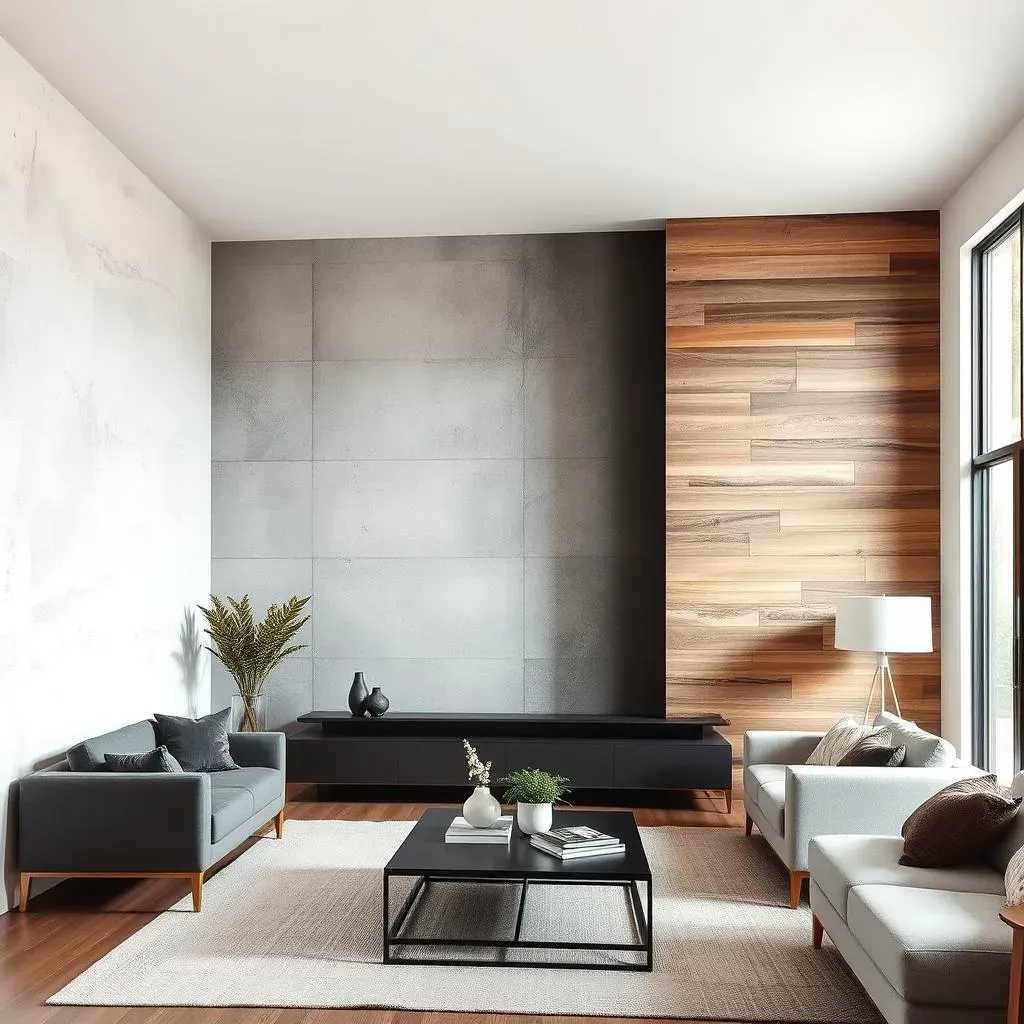
Alternatives to Two Accent Walls: Creative Painting Techniques and Decor Ideas
Embrace the Power of Texture
so you're ditching the double accent wall idea? No sweat! There are tons of other ways to inject personality and visual interest into your space. One of my favorites? Texture! Think beyond flat paint. Textured paint finishes, like faux Venetian plaster or even a simple stippling effect, can add depth and dimension to a wall without overwhelming the room. It's subtle, sophisticated, and a fantastic way to create a focal point without relying on bold color alone. Plus, it can hide imperfections in the wall – bonus!
Another option is to incorporate natural textures, like wood paneling or exposed brick. A reclaimed wood wall can add warmth and rustic charm to a living room, while an exposed brick wall can give an urban edge to a loft space. These elements not only add visual interest but also bring a tactile quality to the room, making it feel more inviting and engaging. It's about creating a space that appeals to all the senses, not just the eyes.
Decorative Painting Techniques: Beyond the Solid Color
If you're craving color but want to avoid the commitment of two accent walls, consider exploring decorative painting techniques. Ombre walls, for example, are a fantastic way to add a subtle gradient of color that's both visually appealing and easy on the eyes. You can start with a light shade at the top of the wall and gradually blend it into a darker shade at the bottom, creating a sense of depth and movement. It's like a work of art, but on your wall!
Another fun technique is to use stencils or painter's tape to create geometric patterns or murals. A simple chevron pattern can add a touch of modern flair to a bedroom, while a hand-painted mural can transform a child's room into a whimsical wonderland. The possibilities are endless! And the best part? You can customize the colors and patterns to perfectly match your existing decor. It's about creating a space that's uniquely you, a reflection of your personality and style.
Alternative | Description | Best Suited For |
|---|---|---|
Textured Paint | Faux finishes, stippling, etc. | Adding subtle depth and hiding imperfections |
Wood Paneling | Reclaimed wood, shiplap | Adding warmth and rustic charm |
Ombre Walls | Gradient color transition | Creating a subtle, sophisticated effect |
Stencils/Murals | Geometric patterns, custom designs | Adding personalized flair and visual interest |
Wrapping Up: The Art of the Accent Wall
So, can you paint 2 accent walls? The answer, as with most design questions, is it depends. It hinges on careful planning, a keen eye for color and balance, and a willingness to experiment. By understanding the principles we've discussed – considering room size, lighting, architectural features, and color relationships – you can confidently decide whether multiple accent walls are the right choice for your space. And if you decide it's not, remember there are plenty of other creative ways to inject personality and style into your home. Ultimately, the goal is to create a space that reflects your unique taste and makes you feel truly comfortable. So go ahead, grab a brush, and start experimenting. Your dream home awaits!
